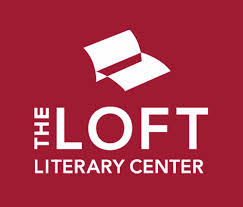Hillary Rettig's Blog, page 20
August 13, 2013
Why the Middles of Projects are Tough (Part 3): Middles Have Middles!
I previously wrote about how the middles of projects are tough:
* They’re a much bigger part of the project than most people realize. (Around 80%!)
However, there’s another problem with middles: they have middles!
Yes, you can have a middle-of-a-middle. Here’s how it works:
Many endeavors begin with a “honeymoon period” where the work is fresh and new, the possibilities seem endless, and you’re filled with energy and enthusiasm. That’s the beginning of the project.

Please meet Lucy, a paralyzed dog in a wheelchair who summited Mount Washington – an 8 mile trip! – and Lucy’s guardian Courtney Dunning. Like all dogs, Lucy doesn’t get daunted by middles: she knows to take things one step at a time and celebrate her achievements. Here’s a video documenting Lucy’s achievement. And here’s her story.
Alas, like all honeymoons, it too soon comes to an end. Reality sets in, and inevitably disappoints. The work doesn’t come together as easily as you had at first imagined, and you become aware that what you write may never live up to your pristine early vision.
Your motivation wanes, but you resolve to soldier on.
And then, you hit a point where everything seems particularly bleak. I call that the “anti-honeymoon,” and the most famous fictional example is probably the “Slough of Despond” (or, in modern parlance, “Swamp of Despair”) from John Bunyan’s The Pilgrim’s Progress:
‘This miry Slough is such a place as cannot be mended; it is the descent whither the scum and filth that attends conviction for sin doth continually run, and therefore is it called the Slough of Despond: for still as the sinner is awakened about his lost condition, there ariseth in his soul many fears, and doubts, and discouraging apprehensions, which all of them get together, and settle in this place; and this is the reason of the badness of this ground.
For many projects, the anti-honeymoon occurs about 25% of the way through.
The Slough = Perfectionism
In The Pilgrim’s Progress, the Slough consists mainly of the pilgrim Christian’s “fears, and doubts, and discouraging apprehensions.” In other words, it has less to do with his actual predicament, and more to do with his perceptions of, and reactions to, that predicament. (See also: perfectionism.)
The important thing to remember about the anti-honeymoon is that it’s temporary: just keep working and eventually things will improve:
You’ll return to the “normal middle” of the piece where things aren’t so bad, and then eventually make it to what Christian would have called your “Celestial City,” where:
(a) The end of the work will be in sight, and the work itself will get easier. (You’ll be focusing on details instead of making major changes and corrections.)
(b) Although the result probably won’t be exactly the same as you initially envisioned, it will probably be fine, and you will be proud to have accomplished it.
August 2, 2013
I’m Offering a Powerful and Economical Online Class/TeleCoaching Bundle at The Loft
 Super-thrilled to be teaching an online class at The Loft, one of the world’s premier community writing programs, starting September 30.
Super-thrilled to be teaching an online class at The Loft, one of the world’s premier community writing programs, starting September 30.
Even more thrilled to be offering a class/coaching bundle. The class will set you up for greater productivity; the 40 minutes of individualized telephone coaching will personalize the class information and help you amplify the result.
All students also get a free e-book of The 7 Secrets of the Prolific.
For more classes (online, Boston, and Hyannis) check out my Events Page.
Why the Middles of Projects are Tough (Part 2): Plus, How to Have Fun Revising!
Last time I wrote about how the middles of writing and other projects can be difficult, citing Dante’s Inferno, which begins “midway upon the journey of our life,” and John Bunyan’s classic The Pilgrim’s Progress, in which the protagonist, Christian, literally bogs down midway, in the infamous “Slough of Despond.”
Middles are where your enthusiasm ebbs often at the exact moment when the project itself seems most chaotic, disorganized, and daunting. They’re a double whammy, in other words.
But that’s not all…
Middles are massive.
[image error]
Remember to always revise by “running” joyfully through your projects. Tough, boggy parts merit a quick inspection and a bit of poking, but then run on, knowing you’ll return to them later.
Anne Lamott famously said, in Bird by Bird, that every piece of writing begins with a “shitty first draft,” but it’s probably more like ten, twenty, or thirty shitty drafts. Make sure you understand what a “draft” is, though:*It’s a single, quick run-through of your piece (or chapter or other section), during which you correct its obvious and easy problems, and partially correct its hard ones.
*You move quickly and lightly through the piece, making incremental improvements and resisting the temptation to drill down or bog down on any one problem.
Then, when you get to the end, you repeat the process over and over again; always moving fast and keeping a light touch. Through these repetitions, you gradually gain insight into your piece’s true meaning and form, and solve nearly all its problems, including the tough ones. (Always ask a colleague or mentor for help with the hard ones—don’t get stuck.)
Many drafts = a “massive middle.” But don’t despair! You actually want a massive middle because…
Quality Happens “Automagically” in the Middle
Continue the above process and, at some point, the piece will “magically” (that’s really how it feels!) attain “non-shittiness,” meaning it will have become well-organized and coherent. At that point, the writing process becomes mostly easy and fun copy-editing and other polishing.
So, let’s assume that the first 15% of most pieces is the inspired part, and the last 15% is easy copy-editing. That leaves a giant middle of 70% where you’re thrashing around in the thickets.
Only, be sure not to thrash! Maintaining a light, fast touch is the best way to ensure that you not only get the piece or project done, but have fun doing it.
July 25, 2013
Last Call: New England
If you’ve wanted to take my Grub Street Writers class NOW is the time. I am moving to Michigan in September (more on this later!), and August’s class will be the last for a while.
It will be held August 12-15 (Monday-Thursday), 10:30am-1:30pm at 162 Boylston Street (2 mins from Boylston Street T; discounted parking available).
All writers welcome, including creative, business, nonprofit, and academic writers. Sign up now!
What To Do If You Are Stuck in the Middle of a Project
Middles are tough.
It’s no accident that Dante began The Inferno, his allegorical journey through Hell, thusly:
 Midway upon the journey of our life
Midway upon the journey of our life
I found myself within a forest dark,
For the straightforward pathway had been lost.
Or that Christian, the pilgrim in John Bunyan’s allegory The Pilgrim’s Progress, encounters the bog called the “Slough of Despond” midway along his journey.
At Grub Street Writers, where I teach, many writers refer to the “Murky Middles” of writing projects.
Dark forests, bogs, murk: you might get the idea that a lot of people find middles not just difficult, but confusing and downright scary.
Here’s the problem with middles:
The piece (or project) is no longer fresh and new and shiny. Your early energy and enthusiasm are waning.
At the same time, the piece is at maximum entropy: meaning, what you’ve done up till now is super chaotic and disorganized.
You’ve also become more aware of the piece’s problems. It’s not living up to the pristine, Platonic vision that initially inspired you!
Moreover, you’re not even sure how to solve the problems, or whether you’ll even be able to solve them.
And the end is nowhere in sight.
The middle, in other words, is where the work gets tougher at the very same moment that your enthusiasm weakens. No wonder you’re discouraged!
It’s also easy to see how the whole thing could snowball into an avalanche of disappointment and discouragement! (Forests, bogs, avalanches—it’s all getting worse and worse!) This is particularly likely if you perfectionistically constantly judge your output: e.g., “This word sucks. That sentence is so inelegant. This project is badly organized. I’ve mismanaged the whole thing. It’s doomed to failure. No one’s interested, etc.”)
Here are some tips for getting through:
 1) If you’re struggling in the midst of a project, recognize that you might not, in fact, be doing anything wrong. It’s just the Murky Middle!
1) If you’re struggling in the midst of a project, recognize that you might not, in fact, be doing anything wrong. It’s just the Murky Middle!
2) Maintain your perspective—this won’t last forever, and like Dante, Christian, and many other intrepid voyagers, you, too, will eventually reach paradise. (Or, at least the end of the work!)
3) Be extra vigilant about perfectionism, and extra diligent about using your tools, including self-compassion and timed writing intervals.
Of course, this entire discussion applies far beyond writing. Dante and Bunyan were writing about one’s spiritual development, and relationships also can have Murky Middles. (I was warned about it in foster parent training.) The Murky Middle also happens during hikes and quilting projects and probably all of life’s important or challenging endeavors.
Good luck using these techniques. As always, I welcome your questions and feedback. Next week I’ll discuss another danger point: the dreaded Middle-of-the-Middle! Have fun till then!
July 17, 2013
Guest Post: Working Absurd Hours Is Not A Badge Of Honor
The below article by digital marketing guru Adam Singer packs a ton of wisdom into a few paragraphs, and is reprinted with kind permission. Adam’s free newsletter The Future Buzz provides terrific advice on digital marketing, time management, and other success skills, and I urge you to subscribe. – Hillary
My entire career I’ve worked very hard to ensure work-life balance. Yet I’ve always been productive because I reduce meetings, refuse to give in to bureaucracy and focus on results-oriented activities and the things that really matter / I’m passionate about.

Dinosaur managers are the worst!
With that, I’ve never really understood those who work absurd hours all the time or the (dinosaur) managers who insist it. I’ve been lucky and actually never worked for a company who was measuring their team’s productivity based on “butts in chairs” or demanding 12 hour days each day.
These things are ridiculous because people not interested in their work will always find a way to waste time, and for your productive, A-list employees there are human limits to how long they can work and be effective. They’ll leave you to go elsewhere if you abuse them. Besides, focusing on time at work is the wrong metric. Instead of time, create objectives / key results and measure those. If given the right tools and you automate / script the busywork, your team may even exceed your goals.
So along that line of thinking it was cool to see a post shared by my friend Alejandra on Alex’s Tech Thoughts blog which puts this succinctly:
The late night check-outs of your office.
The tweet/check-ins on Saturday and Sunday trying to humblebrag that you work weekends.
Please stop.
No one should glorify working long and hard hours. Working hard does not mean you are working smart or even getting more done. It might even mean you can’t figure out how to focus on the important stuff.
Working hard vs. working smart is something you don’t learn until you burn out a few times. I cringe when I see the young founder or business person push out that tweet or check-out about how hard they are hustling or the fact that they are leaving their office at midnight when I’m skimming my feed for news in my bed about to go to sleep. Having no work/life balance can only work for so long and it is not fulfilling. So let’s cut it out, please.
Not only common sense, but the data says working absurd hours is a bad idea. It also reminds me of the Bill Gates quote which I’ve found to be true: “I will always choose a lazy person to do a difficult job…because he will find an easy way to do it.”
Of course the point of the Bill Gates quote isn’t to hire “lazy” people per-say. I have found these types of people actually aren’t even “lazy,” they just hate boring work and are more interested in doing important, meaningful, valuable stuff. They’ll obsess about removing the pesky, repetitive tasks from their plates to focus on the more interesting and creative tasks (which, in the knowledge economy are nearly always the most valuable). [Note from Hillary: Yeah to Adam for not falling into the perfectionist trap of using a moralizing, judgmental label like “lazy” uncritically.)
In digital marketing, you could literally work forever. There are always more posts to create, communities to nurture, campaigns to imagine, conversions to optimize and strategies to flesh out. Your growth is truly up to you. And yes I am definitely guilty of working too long, but balancing here is really the key. It’s a marathon, not a sprint and I’ve managed enough teams successfully long term to understand how to keep them motivated and excited to come to work every day: and it always comes down to balance.
July 13, 2013
“Her Face Went From Scowl to Peace”: 7 Secrets of the Prolific Helps Lifelong Procrastinator and Her 12-Year-Old Daughter
I just wanted to thank you for putting together this comprehensive book. I’ve suffered from writers block/perfectionism my whole life, and once in a while I break through, but then get bogged down again. Your book confirmed some of the core discoveries I made overcoming my blocks, but has done so much to help me see the bigger picture. I love the list of the attributes of perfectionism. I love the description of compassionate objectivity and recently conveyed it to my 12 year old daughter who was feeling discouraged that she wasn’t amazing after a half hour of ice skating instruction. Her face went from a scowl to peace — it made so much sense to her. I also love the section that talks about the stages of writing and how we have to retreat to stage one whenever we start to feel unsafe.
Ira Glass on Developing Your Creative Skill: Go for Quantity, Not Quality
The below 2 minute video of Ira Glass explaining how the secret to artistic quality is to do a lot of art is well worth your time.
Bayles and Orland make the same point in their terrific book Art & Fear. They tell a (true, I believe) story of two pottery classes:
One class was told to create one fabulous pot by the end of the semester.
The other was told to create as many pots as possible.
In the end, it was the students who created many pots who also tended to create the best ones. This is for at least three reasons:
As Glass notes, it takes a lot of time and practice to develop a skill.
The “quantity” students were being nonperfectionist – i.e., focusing on process, not product. (It is likely that some of the “quality” ones didn’t finish even a single pot.)
Quality is not something you can force, and when you try to force it you sabotage the creative process, which demands freedom and flexibility. Rather, quality is something you work towards and hope for. As Flaubert said, “Success must be a consequence and never a goal.” (Catullus says the same thing.)
Ira Glass on Storytelling from David Shiyang Liu on Vimeo.
July 11, 2013
Who Makes the Best Mentor? And Coming to Terms with My $14,500 Mentor Failure
In an article published in the Proceedings of the National Academies of Science, for example, Jerker Denrell of the University of Oxford and Chengwei Liu of the University of Warwick counsel us to model ourselves on solid, second-tier performers, not the flashy types who come in first. The researchers reported on the results of a game played in many rounds. Over time, the most skilled players came to inhabit a second tier of reliable competence. Those who succeeded spectacularly—who took their places in the first tier—were often not the most skilled, but rather were those who got some lucky breaks early on or took big risks that happened to pay off.
Emulating these top performers would probably lead to disappointment, since imitators would be unlikely to replicate their good fortune. Because luck and risk play a dominant role in extraordinary outcomes, Denrell and Liu write, “extreme success or failure are, at best, only weak signals of skill,” and top performers “should not be imitated or praised.” Better, they advise, to learn from individuals “with high, but not exceptional, performance”—those whose success can be attributed to solid skill and not to a rare lightning strike. (from Annie Murphy Paul’s Brilliant blog)
Looking back on what I now consider a pretty bad mentor failure from last year–I paid someone a lot of money to help me generate a corporate speaking practice which never materialized–I think the failure happened largely because I hired a top-tier person. I don’t know how big a role luck played in his success: most people, and most businesspeople in particular, elide the role of luck when discussing their successes. What I do know is that he had an unusually aggressive, arrogant, and egotistical personality that probably aided his success. Unfortunately, that same personality: (a) was impossible for me to emulate (and I didn’t want to), and (b) seriously diminished his usefulness as a mentor. (He was REALLY hard to deal with, and also skimped on providing promised support.)
In the end, I wound up being unable to follow a lot of his advice.

Mentors help you see things from a new perspective – but they have to use the right approach. (From James and the Giant Peach, which also teaches us that mentors come in all shapes and sizes–and species.)
I will take the responsibility for becoming demotivated after my initial attempts failed, but had he been more approachable and available we might have worked together to create a success. (It’s also worth noting that others whom I later consulted questioned his basic approach–which probably brings us back to the “top-tier mentor” problem, since approaches that work for people at the top often don’t work for others.)
Was the mentorship, therefore, a complete waste? Absolutely not. (And dichotomizing–e.g., “fabulous value” versus “complete waste” is perfectionist.) It clarified my thinking and improved my communications style a lot by making it more customer-focused.
Were those benefits worth the $14,500* I paid? Probably not. I suspect I could have learned as much or more–with a lot less angst–from someone cheaper and less obnoxious. This year, for instance, I paid a mere $345 for a subscription to Copyblogger, and have been getting terrific value from it, perhaps because it is helping me build one of my core strengths, writing.
As you can tell from the fact that I did join Copyblogger, I didn’t let the bad mentorship experience prevent me from seeking out new mentors. Why would I, when it’s one of the most empowered and success-catalyzing things you can do?
*I am being up-front about the $14,500 expense in case you happen to be regretting any investments you’ve made that didn’t pan out. $14,500 was a ton of money for me, and I actually spent another $4,000, and countless hours, implementing his suggestions. These were huge losses, but dwelling on them would be meaningless and counterproductive. Instead I focus on what I gained, and what I can do better in the future; and I suggest you do the same concerning any losses you may be regretting.
What have your mentor experiences been like? Do you agree with the advice to choose a second-tier mentor?
See also: How to Find and Keep a Mentor
June 27, 2013
Designer Milton Glaser’s Universe of Abundance
An important element of perfectionism is a sense of scarcity and deprivation, so this quotation from iconic graphic designer Milton Glaser offers an important antiperfectionist message:
 “If you perceive the universe as being a universe of abundance, then it will be. If you think of the universe as one of scarcity then it will be…I always thought that there was enough to go around – that there are enough ideas in the universe, and enough nourishment.”
“If you perceive the universe as being a universe of abundance, then it will be. If you think of the universe as one of scarcity then it will be…I always thought that there was enough to go around – that there are enough ideas in the universe, and enough nourishment.”
Want to live and work in a universe of abundance? Then work to overcome your perfectionism.



